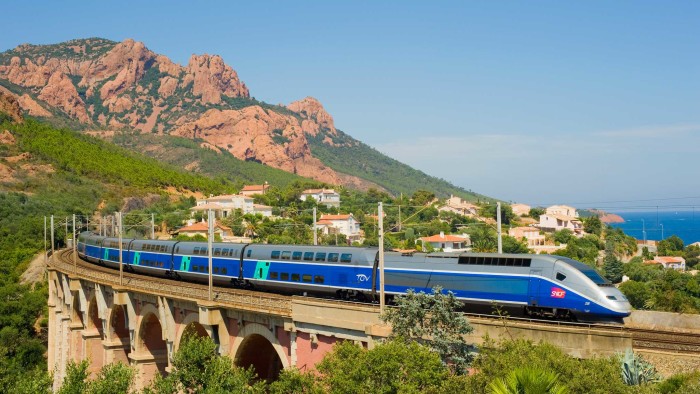All aboard the TGV to Barcelona

Simply sign up to the Life & Arts myFT Digest -- delivered directly to your inbox.
This time, we’re told, it’s finally going to happen. From December 15, direct high-speed trains will link Paris and Barcelona. They will travel at up to 320kph (199mph), completing the trip to the Catalan capital in six hours 17 minutes – the existing direct train takes almost 12 hours.
There have been several false starts along the way. Rumours that TGVs (trains à grande vitesse ) would reach Barcelona in April, and then in October, came and went, amid suggestions that the delay was as much political as technical. The Paris-Barcelona service will be run jointly by SNCF (France’s state-owned operator) and Renfe (Spain’s equivalent) but both sides have been suspicious of the other’s ambitions to extend services and competition on their home soil.
But with political concerns set aside and technical problems solved, from mid-December a sleek double-deck TGV Duplex will leave Gare de Lyon for Barcelona initially twice a day at 7.15am and 2.07pm, with fares likely to start at €59 each way. From March 31 next year, two more departures (at 10.07am and 4.07pm) will be added.
The link makes the concept of an airline-rivalling European high-speed rail network seem increasingly realistic. Including transport from city centre to airport, and allowing time for check-in and security, flying from Paris to Barcelona takes about five hours. From 2017, the case for rail with be strengthened further when a new section of high-speed line from Nîmes to Montpellier cuts the journey to about five hours 45 minutes.
As of next month, British travellers will be able to leave London by Eurostar at 9.17am to connect with the afternoon TGV from Paris, although an earlier Eurostar at 7.55am allows for a leisurely lunch at Gare de Lyon’s celebrated Train Bleu restaurant. You can down the half bottle of red included with the set lunch (plus the liberal quantity of Martinique rum in which the rum baba is doused), safe in the knowledge that your train leaves from a platform 100 metres from the table.
There is no check-in; passengers can wait until a minute or two before departure before stepping on board. Choose an upper-deck seat for the best views; there are tables for four for families while a first class table for two is ideal for couples. After easing out of Gare de Lyon and threading its way through the Paris suburbs, the train will gather pace, taking the Rhone Valley high-speed line, bypassing Lyon and gliding past pretty French villages. The maximum speed here is 300kph (186mph) – not too fast to appreciate rural France.
The train will stop briefly at Valence and then turn west near Avignon, slowing to call at Nîmes and Montpellier. Between Narbonne and Perpignan it will flirt with the Mediterranean coastline, crossing causeways over several lakes, where vast flocks of flamingos seem unperturbed by the passing trains. Beyond Perpignan the TGV will join the new high-speed line and you will feel a slight push back into your seat – though not enough to spill your vin rouge – as it accelerates to maximum speed. It will call briefly at Figueres Vilafant (a short walk from the fabulous Salvador Dalí museum), then continue to Girona before rolling into Barcelona’s bright and modern Sants station just after 8.30pm. Breakfast in London, lunch in Paris, dinner in Barcelona.
The author is the founder of the rail website seat61.com. Tickets for the direct Paris-Barcelona trains are now on sale, with Rail Europe (raileurope.co.uk), Loco2 (loco2.com) and Capitainetrain (capitainetrain.com)
Comments